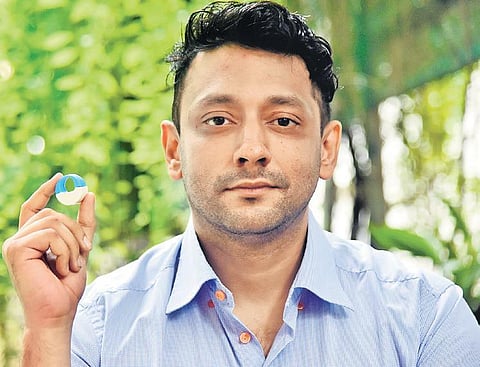

HYDERABAD: Wearable technology is here to stay, there’s no doubt about that. The need for it simply gets stronger with every passing day as we live in the age of hustling, non-stop interactions (mostly virtual) and constant information overload. Our dependency on technology is so intense that we need it to remind us to hydrate regularly, walk enough and even sleep on time.
But while we live this parallel virtual life to the hilt, which stops for no one, are we forgetting to take a breath? Are we giving our bodies enough time to reset? Are we depriving our mind of the rest it needs? Where does well-being fit in this scheme of things?
The prompt reply would be, meditate for 40 minutes every day and you will feel at peace. But what is meditation, how does one practise it? Chief national badminton coach Pullela Gopichand has been meditating every day for the last 25 years. It calms his mind, helps him focus better and keeps him alert. “But if I tell the kids in my academy to meditate, they will close their eyes, they will take deep breaths. But how do I know if they are actually doing it right? In sport, we have this saying: if you can’t measure it, you can’t improve it. The same applies here too. Meditation is such an abstract concept and the new generation wants quantitative results,” he says.
Thus came along the idea of monitoring the mind during meditation. In a first in the country, Oxford alumni and biomedical technology entrepreneur Bhairav Shankar, along with Gopichand, has taken wearable technology to another level by devising a ring that helps one know how well they are meditating.
Dhyana, a smart ring, uses infrared to monitor heart rate variability and maps out the entire meditation session. It reveals how many minutes one actually meditated for, their breathing pattern and how focused they were throughout the session. While it can integrate with YouTube and meditation apps, the ring also comes with a special function -- Quick Calm. This operates using a phone; one has to focus on an animated wave on their phone screen. If they get agitated, the wave will move vigorously.
The idea clicked with the Indian Olympic Association (IOA) which bought the rings for the entire delegation and coaches headed to Tokyo. “The Olympics is usually a celebration with dance, music, barbecues and people catching up. But this time, it’s different. Our athletes are going to be in small rooms, there’s going to be a lot of body temperature testing, masks, sanitisers. It’s going to be stressful. In such a scenario, this ring would help them stay calm and focused,” says Gopichand, who has clocked 15,000 hours of meditation using Dhyana.
According to Bhairav, son of noted film director Mani Shankar, this is something that did not have a market nor demand. “But more and more people are warming up to the idea. Dhyana measures what we call mindful minutes of meditation. People are using this technology not only as a means of motivation but as a means of consistency. Now, they want to meditate and also do it well. I met Gopi in late 2019 and he loved the concept,” says Bhairav, who calls Dhyana the Fitbit for meditation.
Speaking about the future of wearable technology, he says the first such technology ever used by man is spectacles. “Then came watches, smart watches, pedometers. It’s not new but will keep evolving. Also, we, today, need such technology to keep ourselves connected with our body,” he says.